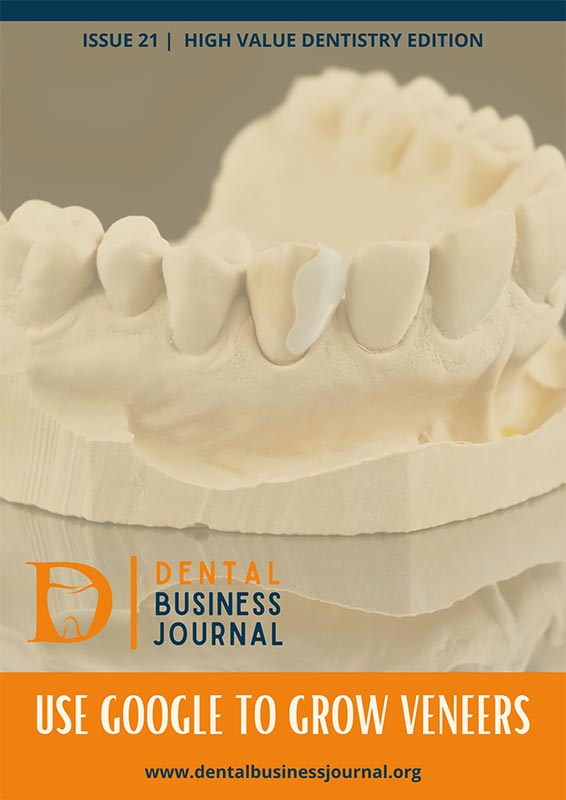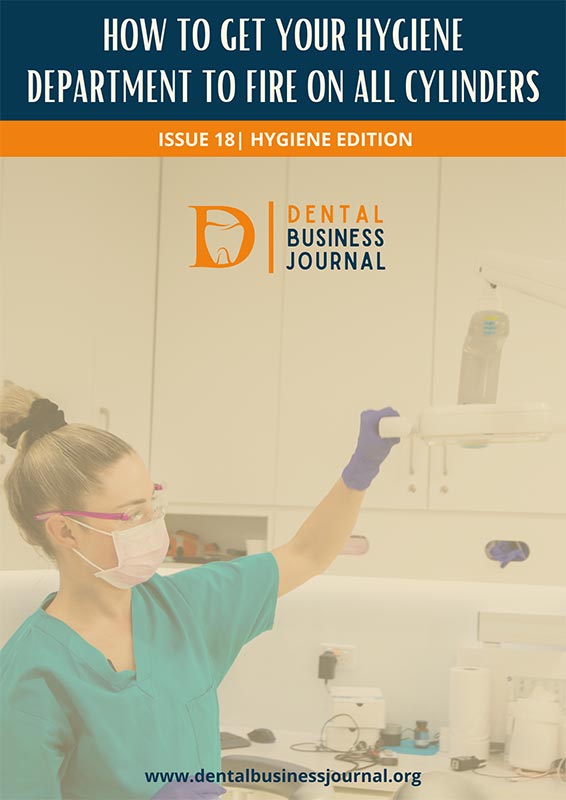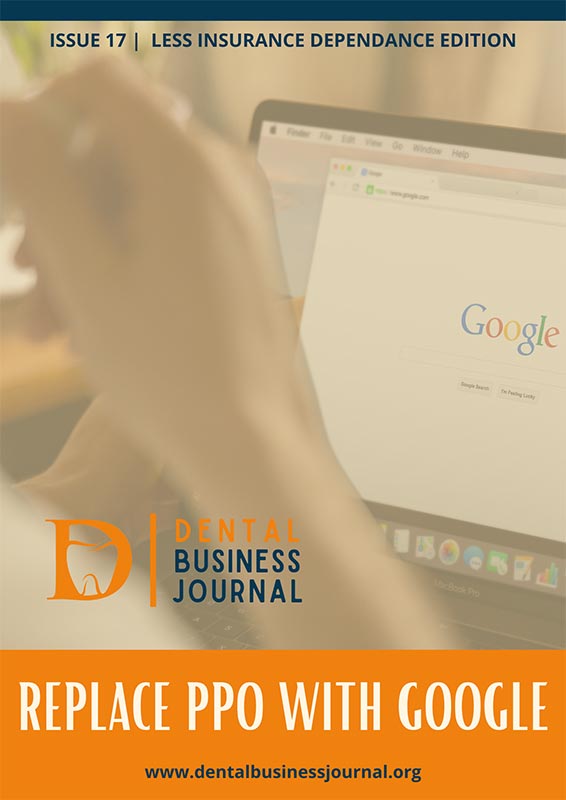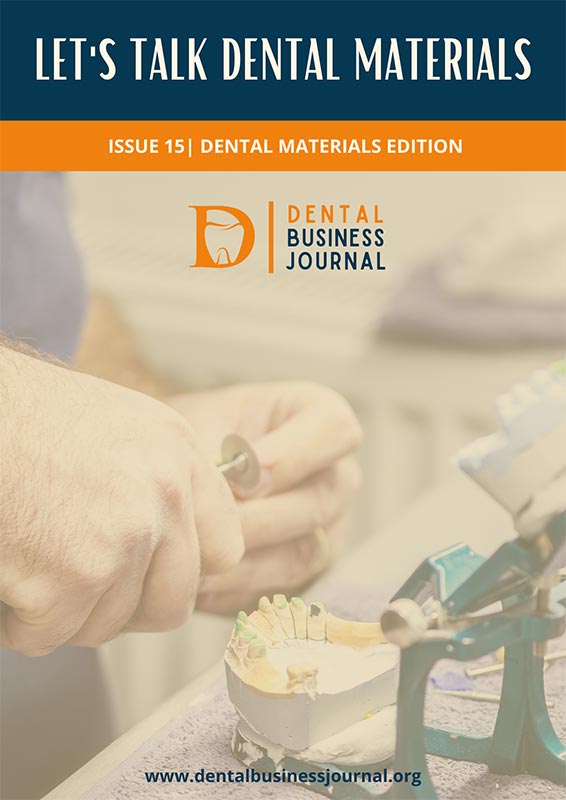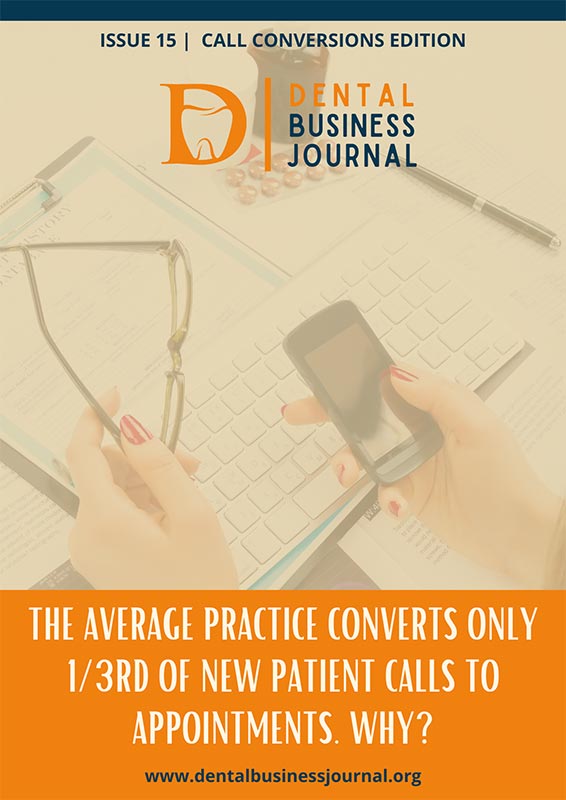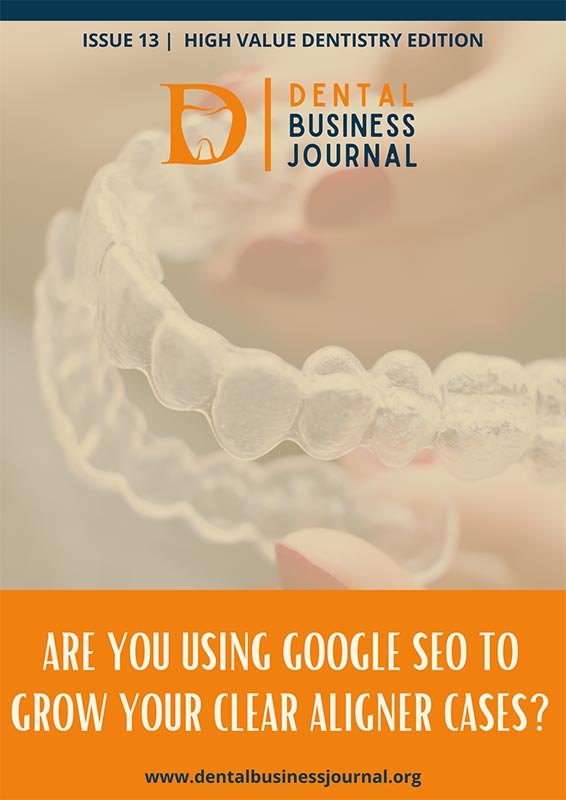Rocking Case Acceptance
Are you a dentist struggling to get your patients to accept the treatments you recommend?
You’re not alone. It can be frustrating when you know you can help your patients, but they don’t seem to see it the same way. That’s why we’ve got an excellent resource for you: an article in the Dental Business Journal about improving case acceptance. In this article, you’ll learn valuable tips and insights from Dr. Eric Block, who shares his expertise on the subject. Hosted by Naren Arulrajah, this Case Acceptance Edition is a must-read for any dental practice looking to improve its patient acceptance rates. So if you’re ready to start rocking your case acceptance, check it out!
What is case acceptance?
My definition of case acceptance is when a patient has scheduled, shown up, and received the planned treatment. It needs to be better for them to nod their head during the consultation, seem interested, and say yes but not schedule or not show up for their treatment. That doesn’t count and trust me, I’ve been there, ‘and it is very frustrating. After years of practicing dentistry, I understand that explaining the diagnosis, treatment recommendations, and risks of not following through with treatment is crucial to case acceptance. However, while explanations using keywords and phrases have proven effective, it is even more effective to use images and physical models for the patient to have a visible understanding of the treatment you are trying to explain. For example, when a patient is in the chair for an implant consultation, I will present an oversized model representing the implants, abutments, and crowns. They can see what they look like and hold the implant and prosthetic parts, which is much easier to explain.
Images
Therefore, investing in a good camera is needed, as it can help capture essential information like a cracked or gum recession. I will take an intra-oral picture, put it on the monitor in front of the patient, and blow up the picture ten times the size. I will point out areas of decay, cracks, leaking old fillings, etc. Patients will often say wow’ I have never seen my teeth like that, or wow, those are gross and point to the crack or decay. It gives the patient more motivation to move forward with treatment.
Videos
The saying “a picture is worth a thousand words” is so true, but a video is worth ten thousand. Short educational videos of the procedure provide a clearer understanding of the process. They are quick, Informative, and persuasive. I will often use it for explaining the crown, implant, sleep apnea device, root canal, or clear aligner process. Most questions are answered in the video, and it also helps from you having to go through the exhausting process of verbally painting a picture for the patient.
Many doctors claim that their case acceptance percentage is low. Patients complain that they don’t understand the doctor and that the doctor is talking over them. Only a fellow dentist who comes to you as a patient will understand industry jargon, which may happen only one percent of the time. How do you talk to a patient in a language they would understand?
A vital component of every dental practice is all-important patient-doctor communication. Unfortunately, many doctors tend to showcase their credentials and use scientific terminology while speaking, making it challenging for patients to comprehend the suggested treatment plan.
Instead, they should use straightforward language that patients may easily understand when explaining topics. I like to pretend that I am speaking to my seven-year-old son. Speak so a child can understand what the patient’s issue is and how you can fix it. Point to the abovementioned techniques of showing the intra-oral images you have taken, educational videos, and models. You don’t have to prove how smart you are. Don’t use terms like “Sir, you have a craze-line on the distal buccal undermined cusp of #19”. Instead, say, “Bob, you have an enormous old silver filling that you probably had put in there when you were a kid, and not it is cracking and needs a crown to protect it. Otherwise, it may break in a way where the tooth can’t be saved and would have to be pulled. Let’s get you scheduled for a crown before that happens”. With this explanation, the patient will likely schedule and move forward with the recommended treatment.
Patients also commonly want to know three things: 1. how much the procedure will cost, 2. how long it will take, and 3. whether it will hurt. Giving patients clear responses to these questions can empower them to make knowledgeable choices about their treatment plan and boost their confidence in carrying out the suggested course of action.
The more dentists practice these conversations and answers to questions, the better they will get with case acceptance. It’s like a broadway actor getting ready for the big show. The more practice you get, the more chance you will crush that performance.
Find your champions.
Often patients will seek the advice of one of your staff members before moving forward with treatment. For example, you leave the room, and they will ask the hygienist, assistant, or administrator about the recommended treatment.
It helps that all staff members may need to understand each type of treatment thoroughly. However, having one or two champion team members knowledgeable in specific treatments is extremely helpful in increasing case acceptance. For example, you can have an implant or clear aligner coordinator handling these cases. Ensure you educate the staff on how you want treatments and risks explained to the patient. Even take them to continue education courses with you.
Treating the staff and their families is a great way to increase case acceptance.
I treat my staff and their immediate family members at a significantly discounted rate. It is worth the time and energy, and they will greatly appreciate your work. In addition, they can serve as the most valuable advocates for the practice by sharing their experience with the patient, answering questions, and providing honest feedback about the practitioner’s services. This strategy can build genuine trust, become a network of advocates, and encourage patients to proceed with treatment.
How does data apply in case acceptance?
Dental practices should have a solid pulse on the practice’s case acceptance numbers. The only way to do this accurately is through data. This requires using key performance indicators (KPIs) to understand the practice’s performance.
Case acceptance and treatment acceptance KPIs per provider and procedure offer essential insights into the office’s strengths and weaknesses. You will find out what procedures you are not closing and what team members need help increasing case acceptance. This should be approached as a learning experience to help the practice improve and not as a corrective or criticism. It is there to assist and not to discipline. Dental professionals can discover areas that need improvement and take action by analyzing this data.
Do you want to listen to the official podcast episode of this journal?
Watch the full interview on YouTube!
Subscribe and get notified of more episodes like this!



